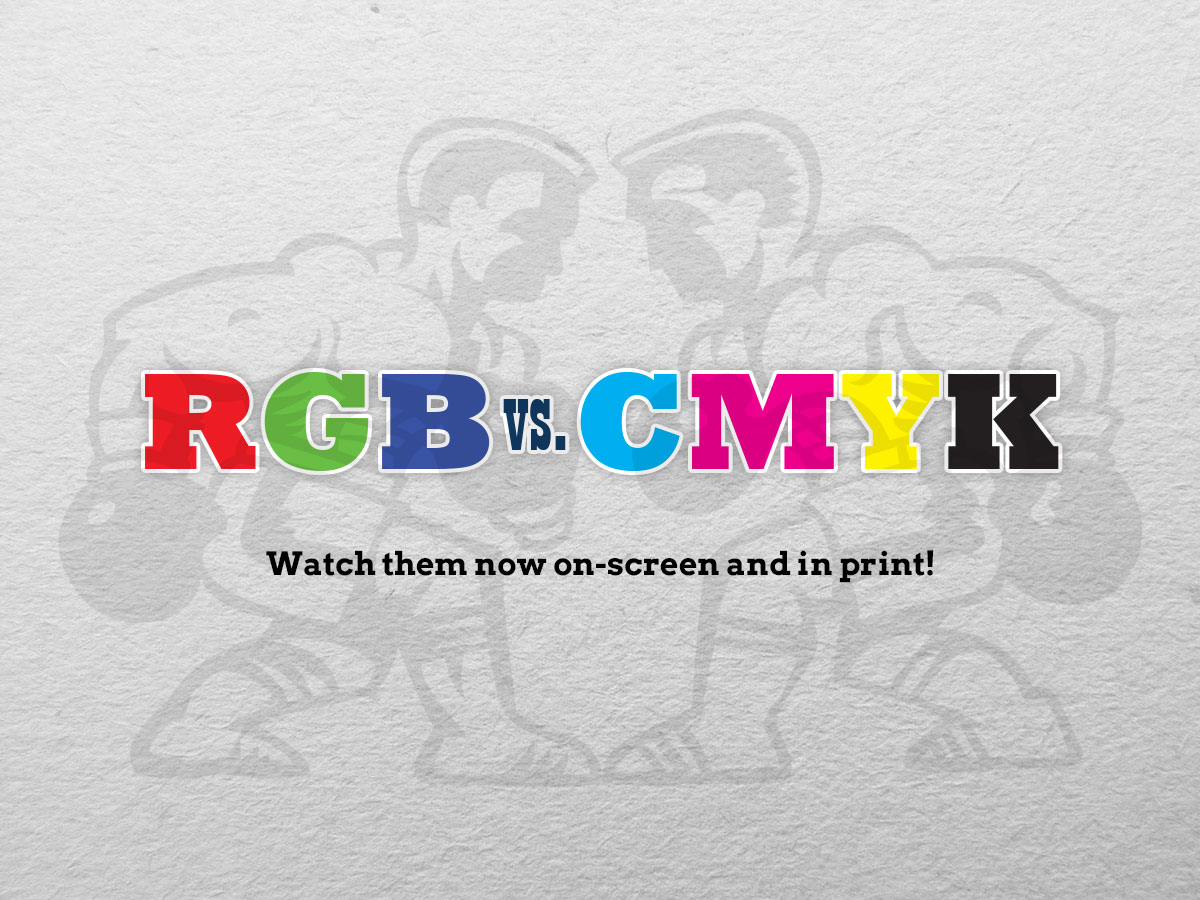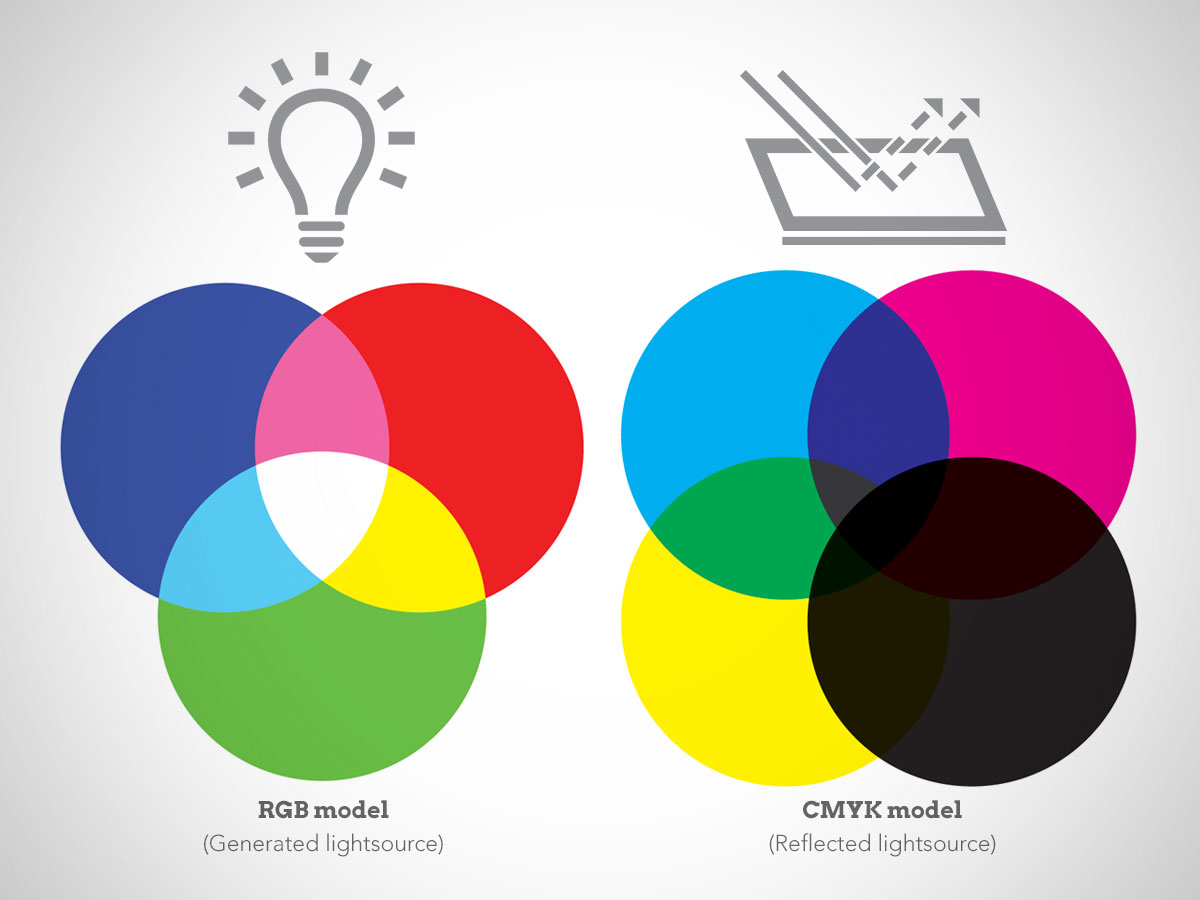RGB and CMYK are two different colour models, and understanding the difference can mean producing great-looking print materials rather than muddy, dull and disappointing ones. It’s all based in the science of how the human eye and brain perceive colour, so don’t blame me the next time your PPT printouts don’t look as fresh on paper as they do on screen.
The brain sees colour in two ways: as generated light or as reflected light. That’s it. Generated light is the stuff that comes directly from a source (a lightbulb or the sun). Reflected light is caused when a physical object reflects the light back to our eyes. Pure and total light is known as white, and you’ve probably heard the odd smart aleck tell you that white is actually every colour combined. Conversely, if there is no light (generated or reflected), we can not see any colour either. This is known as black (the absence of light and colour), and we bump into coffee tables as we search for the light switch.
The RGB colour model is used by monitors, televisions, scanners, and digital cameras. This colour space uses very small bands of red, green, and blue light to generate varying shades/hues of the colour spectrum. Put a magnifying glass on the front of your monitor in a white area and you’ll be able to see the red, green, and blue bands. In darker areas, the bands of RGB are proportionally darker as well. Basically, adding more RGB intensity/brightness will result in brighter colours until a pure white light is achieved. Thus, RGB is an “Additive” method of mixing colours (adding light or brightness). By mixing varying amounts of red, green, and blue light, you can create most other colours.
The paper of a magazine, catalog, or book can’t generate light like a computer monitor. It has to rely on reflected light, and each shade of colour absorbs light, thereby reducing how much light gets reflected. This is called a “Subtractive” colour model. and the subtractive color model that printers employ is based in a mix of four base ink colours: Cyan (C), Magenta (M), Yellow (Y) and Black (K).Printers use paper as the white base, and the inks that get placed on the surface simply changes the amount of light that gets reflected. When CMY are combined in increasing amounts, the resulting colour approaches black because light gets absorbed(subtracted) in increasing amounts. The darker the colour, the less light is reflected. A fourth color, black, is added for economical and practical reasons, and is referred to as ‘K’ so that it doesn’t get confused with blue. By mixing varying amounts of cyan, magenta, yellow, and black inks, you can create most other colors. All commercial, full-colour printing uses CMYK inks. They augment this ink set by adding custom “Pantone” spot inks, but that is another topic for another day.
The image below is a simple visual way to help you remember the difference between generated and reflected light.
So why is the difference important? Most colours created on your RGB monitor can be duplicated using CMYK inks, but not all. Your RGB monitor is generating light, so it can create some bright colours that can’t be duplicated on any CMYK printing press. Paper can only reflect light, so if you print the super-bright RGB colours in CMYK, they get a lot duller.
If you’re designing artwork in an RGB colour space, you should always be prepared to convert your colours to CMYK before sending to a professional printer. Depending on your artwork, the colours might shift a little or a lot.
If you’re a real science freak and want even more info on this topic, then I urge you to read up elsewhere. Wikipedia has some useful info on the depth and breadth of each colour space. The most important this know is that there are certain ranges of colour seen in RGB that quite simply are not attainable using the CMYK model. Obviously, RGB is a better method to create colour, but it just isn’t practical for printing. So, until the day comes when we can start printing using light (come on, science!!) then I suspect that CMYK (or the next model) will be around for a while.
To read a bit on the history of the CMYK ink model, visit this site. You’ll notice that it hasn’t really been around for too long and maybe it’s not perfect, but it is the standard for printing. And we all know the world needs standards.







Leave A Comment